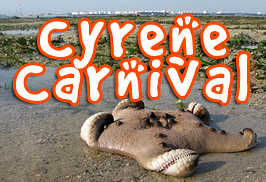Natural golf courses redefine green
More superintendents use fewer chemicals while enjoying the view
By Pete Iacobelli
The Associated Press
Updated: 3:40 p.m. ET July 1, 2005
OKATIE, S.C. - When Hugh Williams began golfing in his 20s, he was overwhelmed by the Lowcountry beauty that surrounded almost every shot that day at Crooked Oaks Course on Johns Island.
“Somebody’s got to maintain this and keep it around,” Williams thought, and a vocation came to life.
Williams, now superintendent at Oldfield Club in Okatie, is part of a growing wave of golf course superintendents, owners and industry leaders who value wildlife and natural habitat as much as low scores and regular customers.
“I think golfers want more than golf these days,” said Jen Peak with Crescent Resources, which builds homes on the Oldfield property.
Williams’ course recently was named a Certified Audubon Cooperative Sanctuary, a designation achieved by fewer than 2 percent of layouts around the world.
Oldfield became the 13th course in South Carolina to get the stamp of approval from Audubon International, and the group’s Shawn Williams says the numbers are increasing. In the Palmetto State, 49 courses are registered with Audubon on the way to certification, Williams said.
Audubon International, which is not affiliated with the National Audubon Society, is an environmental education organization dedicated to sustainable development.
Osprey over the 11th
Decades ago, course construction often consisted of bulldozing land and mapping out holes with little regard for what was there before. Wildlife? It could find somewhere else to live.
Marvin Bouknight, Oldfield’s naturalist, said his wife once took a recreational management position in Charleston County up the coast. That county “has golf courses,” Bouknight recalled complaining. “You can bet there won’t be any wildlife out there.”
Now, Bouknight can look almost anywhere on Oldfield’s 860 acres, including the 18 holes designed by Greg Norman, and find something natural to enjoy.
There might be an osprey grasping a fish as it glides over the 11th fairway or bobcat footprints in bunkers or cheery colorful plants next to landing areas. On a recent wildlife tour, Bouknight found an atamasco lily, also known as the “naked lady,” next to one hole and was as excited as if he’d notched a double eagle.
“This is a good find, a real good find,” he said, smiling.
Audubon certification involves six ongoing steps, including satisfying questions about safe environmental planning, water conservation and wildlife and habitat management.
“The new-school superintendents, the younger guys coming up, are taught more” about environmental awareness, Shawn Williams said. “What I consider the baby boomer generation, they take a lot of pride in their yards, are more socially aware. They take more awareness about golf’s evolving nature.”
Sierra Club still critical
Eric Antebi, a spokesman for the Sierra Club, says the organization hopes golf courses always use environmentally sound tactics and adds that people should not be fooled into thinking courses are part of the natural order of things.
“The real question is whether or not golf courses are a net positive for the environment, and by and large they are not,” Antebi said by phone from the group’s San Francisco headquarters.
Chuck Borman is executive director of the Carolinas Golf Course Superintendents Association and was chief operating officer for the Golf Course Superintendents Association of America. He said superintendents and course owners always were strong environmental stewards, but did not have the choices available today.
Fertilizers that kept fairways lush were potentially harmful to natural habitat and water runoff routes were not as precisely planned as is possible with more modern courses, he said.
Superintendent budgets, which can range from $100,000 a year for a routine public course to $1 million or more for a high-profile resort layout, also play a role in how environmentally conscious a course can be.
Controlling pesticide use
Hugh Williams said letting areas such as banks of water hazards and collection spots around greens remain as they might have been before course construction helps maintain costs and save wildlife.
“Those are areas where you don’t need things like fertilizers and pesticides,” he said.
For those areas that do need maintenance, Oldfield picks out individual spots instead of the scatter-gun spray method seen in years past. A computer system allows Williams to control watering time. Sensors tell staffers when watering should stop.
An irrigation system collects runoff water and filters it so it can be used again. The Ocean Course, Pete Dye’s famed layout on Kiawah Island, uses a similar filtering technique to conserve water.
These days, wildlife often makes good business sense, too.
Oldfield’s golfers — the course has a relatively modest 12,000 rounds a year, Williams said — are treated to sights you’re not going to find at the local muni.
“People love to see wildlife on golf courses,” Borman said. “They love to see birds. They love to see trees.”
Tips on golfing, nature
Oldfield goes a step further.
On one side of the course yardage guide are the usual golf tips such as avoiding the live oak on the front side of the sixth green. On the other side, there are notes about natural attractions.
“The wildlife found in this area includes foxes, white-tailed deer, fox squirrels and a diverse population of birds including wild turkeys, wood storks and tricolored herons,” the guide says.
Borman says his organization holds seminars and lectures about the advantages of Audubon’s certification programs. He links interested course owners and superintendents with others who’ve gone through the process.
Oldfield’s Williams is ready to pass on what he knows.
“You can’t play a round of golf out here without seeing something you’ll remember,” he said. “That’s what we want.”
© 2005 The Associated Press. All rights reserved. This material may not be published, broadcast, rewritten or redistributed.
© 2005 MSNBC.com
URL: http://www.msnbc.msn.com/id/8418445/
Tuesday, July 05, 2005
More Golf Courses from now on?
Posted by
Monkey
at
Tuesday, July 05, 2005
![]()

 I can be contacted at
I can be contacted at 







No comments:
Post a Comment